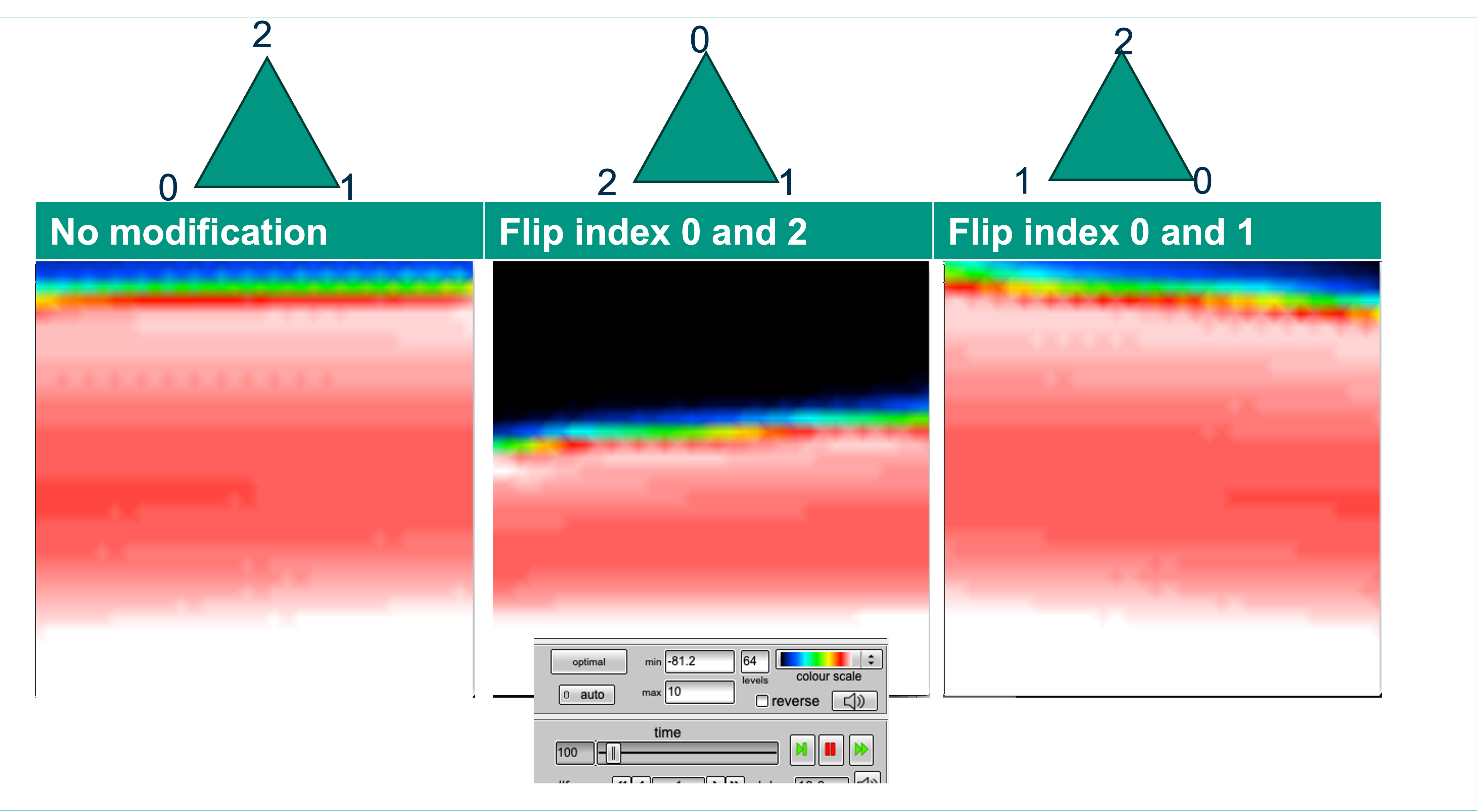Hi everyone,
I found some strange behavior using openCARP for monolayer meshes (monodomain sim):
When I switch the order of point ids within triangle elements, also the visible conduction velocity changes. (I was inspecting code flipping the normals of all elements by changing the winding order.)
So for a triangle Tr 0 1 2 changing to Tr 2 1 0 this could make sense because of the changed in normal direction (still strange for 2D meshes). However, changing Tr 2 1 0 to Tr 1 0 2 also changes the propagation while not modifying the triangle-based normal direction.
My question would be: Is there some “rule” for triangle elements as for the other types of mesh elements in which order they should be used? And how can I enforce this, or does this effect shrink when going to full geometries?
My guess would be, that this is somewhere in the local coordinate system openCARP builds in SF_fem_utils.h which is only based on the first two triangle indices. But I’m too much of a beginner to understand these inner workings fully.
I attached the results of my experiments. If you need more information let me know.
Fiber direction along x (left to right) sheet direction along y (bottom to top). Courtemanche; just one region, stimulus planar from the bottom. Pts, lon files are the same, apart from the changed index order also the elem file.
Results for a 5x5 cm monolayer triangular mesh

I also did an example with a 3x3 points mesh which also shows a voltage difference between triangles with normals pointing up and down (just exchange the first and last index of each element in the elem file)
Best regards,
Pascal
@font-face
{font-family:"Cambria Math";
panose-1:2 4 5 3 5 4 6 3 2 4;
mso-font-charset:0;
mso-generic-font-family:roman;
mso-font-pitch:variable;
mso-font-signature:-536870145 1107305727 0 0 415 0;}@font-face
{font-family:Aptos;
panose-1:2 11 0 4 2 2 2 2 2 4;
mso-font-charset:0;
mso-generic-font-family:swiss;
mso-font-pitch:variable;
mso-font-signature:536871559 3 0 0 415 0;}p.MsoNormal, li.MsoNormal, div.MsoNormal
{mso-style-unhide:no;
mso-style-qformat:yes;
mso-style-parent:"";
margin-top:0in;
margin-right:0in;
margin-bottom:8.0pt;
margin-left:0in;
line-height:115%;
mso-pagination:widow-orphan;
font-size:12.0pt;
font-family:"Aptos",sans-serif;
mso-ascii-font-family:Aptos;
mso-ascii-theme-font:minor-latin;
mso-fareast-font-family:Aptos;
mso-fareast-theme-font:minor-latin;
mso-hansi-font-family:Aptos;
mso-hansi-theme-font:minor-latin;
mso-bidi-font-family:"Times New Roman";
mso-bidi-theme-font:minor-bidi;
mso-font-kerning:1.0pt;
mso-ligatures:standardcontextual;}.MsoChpDefault
{mso-style-type:export-only;
mso-default-props:yes;
font-family:"Aptos",sans-serif;
mso-ascii-font-family:Aptos;
mso-ascii-theme-font:minor-latin;
mso-fareast-font-family:Aptos;
mso-fareast-theme-font:minor-latin;
mso-hansi-font-family:Aptos;
mso-hansi-theme-font:minor-latin;
mso-bidi-font-family:"Times New Roman";
mso-bidi-theme-font:minor-bidi;}.MsoPapDefault
{mso-style-type:export-only;
margin-bottom:8.0pt;
line-height:115%;}div.WordSection1
{page:WordSection1;}